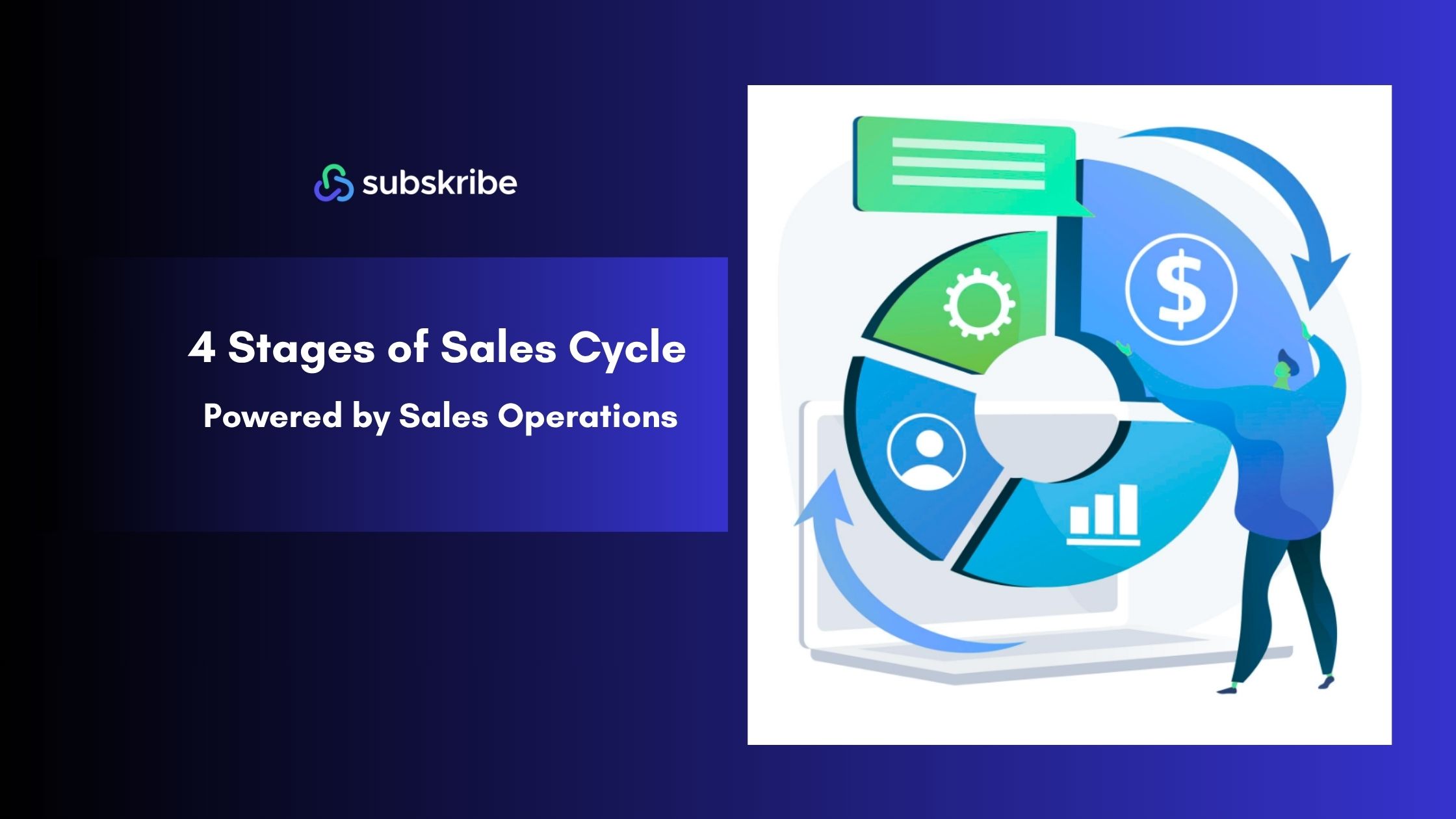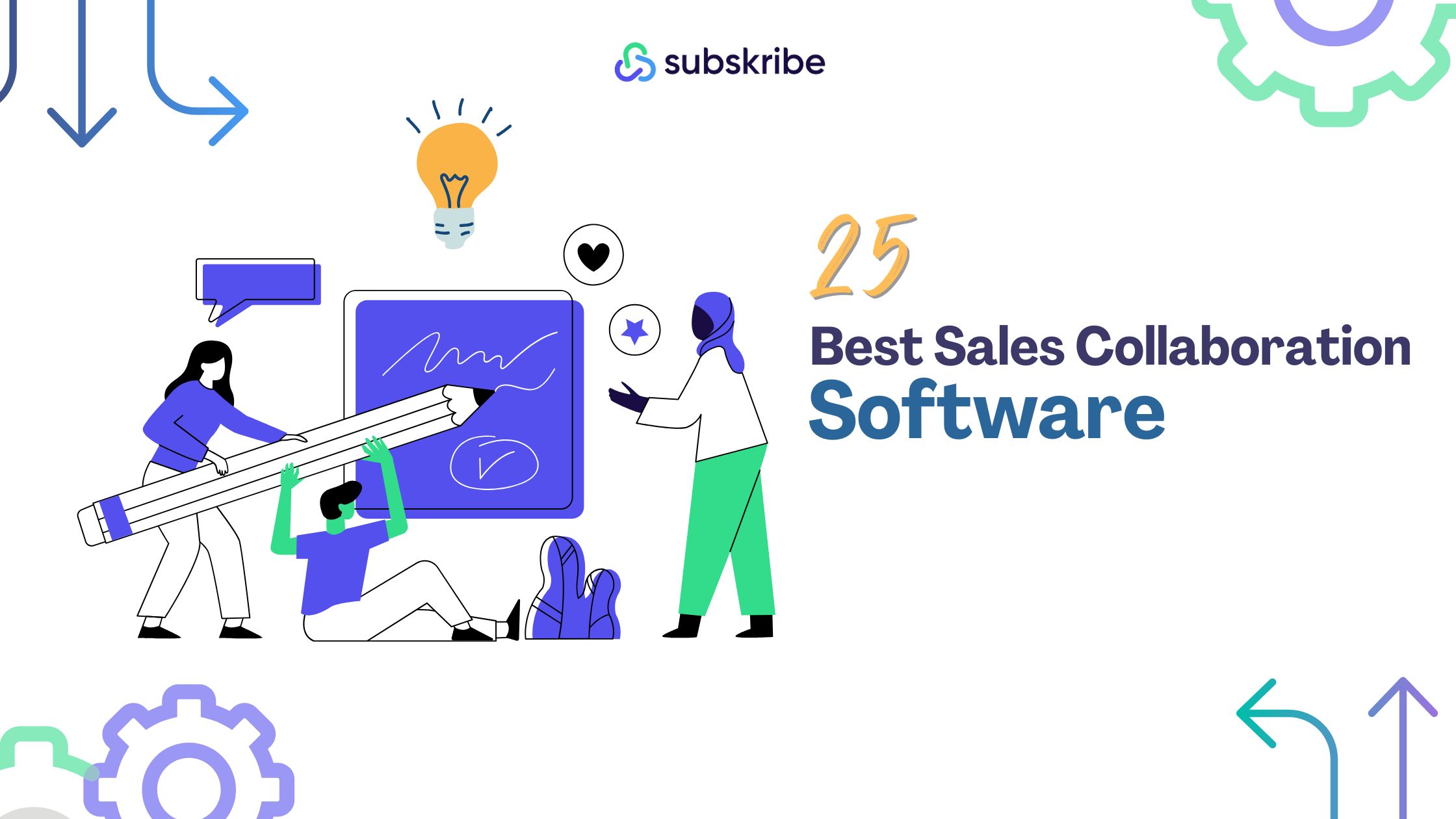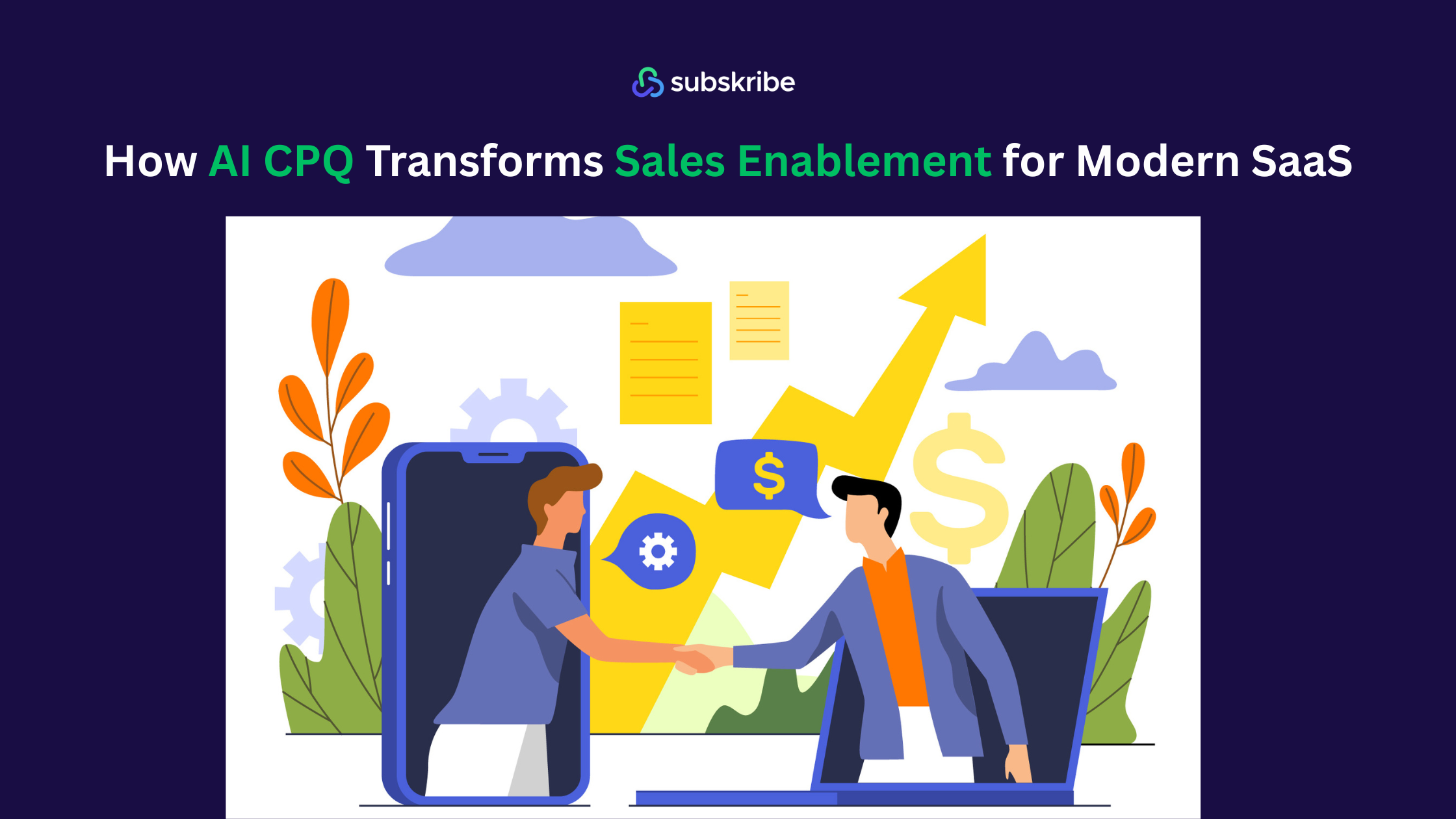4 Stages of the Sales Cycle - Powered by Sales Operations
Every deal your sales team closes follows a path. It starts with a conversation, moves through discovery and negotiation, and ends with a signature. This journey is what we call the sales cycle, and while it might look different across industries, the underlying structure remains consistent.
Understanding the 4 stages of the sales cycle is key to improving performance and forecasting. But here's what most people miss: the sales cycle doesn't run itself.
Behind every smooth deal progression, accurate forecast, and on-time close is a sales operations team working to eliminate friction. Sales operations build the infrastructure that keeps your sales cycle predictable and scalable. They standardize processes, maintain data hygiene, implement the right tools, and automate repetitive tasks so your reps can focus on selling, not administrative work.
Think of sales operations as the engine room of your revenue machine. While sales reps are the face of the deal, sales operations ensures the systems, workflows, and technology stack are running efficiently in the background. From CRM configuration to CPQ automation, sales operations orchestrates the behind-the-scenes work that turns a chaotic sales process into a repeatable, data-driven motion.
At scaling SaaS companies, this becomes even more critical. As deal complexity increases with multi-product configurations, usage-based pricing, and custom terms, sales operations become the difference between deals that stall in legal review and deals that close in days.
Modern sales operations teams leverage technology like Configure, Price, Quote (CPQ) platforms and AI-powered automation tools to streamline approvals, eliminate pricing errors, and accelerate quote generation. Platforms like Subskribe are purpose-built to reduce the operational burden on both sales and sales operations, giving teams the automation they need to manage complex deals at scale.
Let's break down the 4 stages of the sales cycle and how sales operations powers each one.
The 4 Stages of the Sales Cycle and How Sales Operations Powers Each One
The 4 stages of the sales cycle form the backbone of every revenue motion. But without sales operations orchestrating the systems, data, and workflows behind each stage, even the best sales teams hit bottlenecks. Let's walk through how sales operations transform each stage from a manual process into a scalable, repeatable motion.
Stage 1: Prospecting: Data-Driven Lead Management
Prospecting is the first stage of the sales cycle, where your team identifies and reaches out to potential customers. It's the foundation of your pipeline ,and if this stage is messy, everything downstream suffers.
This is where sales operations shine. Your sales operations team ensures that leads don't just pile up in a spreadsheet. They're captured, enriched, scored, and routed to the right reps at the right time. Sales operations builds and maintains lead scoring frameworks that help prioritize high-intent prospects over tire-kickers. They configure CRM systems to enforce data hygiene, ensuring every field is populated correctly and every lead source is tracked.
Beyond data management, sales operations design territory mapping and routing rules so leads land in the right hands instantly. They build performance dashboards that display representative activity, response times, and conversion rates, providing managers with visibility into what's working and where coaching is needed.
Automation plays a huge role here. Sales operations implement tools that automatically assign leads based on geography, company size, or industry. They integrate marketing automation platforms with your CRM so that when a prospect downloads a whitepaper or attends a webinar, your sales team is notified immediately.
At Subskribe, we understand that clean data and system alignment establish the foundation for the entire sales cycle. When your sales operations team has the right infrastructure in place, integrated systems, reliable data, and automated workflows, your reps start every conversation on the right foot. No more chasing down missing information or working duplicate leads.
Stage 2: Qualification: Turning Leads into Opportunities
The second stage of the sales cycle is qualification, where you determine which prospects are actually ready to buy. Not every lead is worth pursuing, and qualification is how you separate real opportunities from noise.
Sales operations standardize this process by implementing qualification frameworks like MEDDIC, BANT, or SPICED. These aren't just acronyms; they're the criteria your reps use to assess whether a prospect has the budget, authority, need, and timeline to close. Sales operations embed these frameworks directly into your CRM, creating required fields and stage-gate processes that prevent unqualified deals from advancing.
Workflow automation is critical here. Sales operations sets up automated alerts when key qualification criteria are met, triggers follow-up tasks when deals stall, and builds dashboards that show conversion rates from Marketing Qualified Lead (MQL) to Sales Qualified Lead (SQL). This visibility helps you identify where deals are dropping off and why.
CRM governance is another key responsibility of sales operations during qualification. They enforce consistent opportunity naming conventions, mandate stage updates, and ensure that forecasting data is accurate. When sales operations maintain tight CRM governance, your forecast becomes predictable and your leadership team can make confident decisions about hiring, spending, and growth.
By automating qualification workflows and standardizing criteria, sales operations removes subjectivity from the process. Your sales team knows exactly what "qualified" means, and your pipeline reflects reality instead of wishful thinking.
Stage 3: Proposal: Automating Quotes and Pricing
The proposal stage is where many deals either accelerate or stall. This is when your sales team presents pricing, product configurations, and terms, and it's where sales operations' impact is most visible.
Traditionally, generating a quote meant toggling between spreadsheets, Slack threads, email chains, and legal reviews. Reps would manually calculate pricing, check discount approval thresholds, and format proposals in Word docs. This process was slow, error-prone, and frustrating for everyone involved.
Sales operations transform this stage by implementing Configure, Price, Quote (CPQ) systems that automate quote generation from end to end. With a modern CPQ platform like Subskribe, sales operations configure pricing rules, discount guardrails, and approval workflows once, then let automation handle the rest. Reps can generate accurate, on-brand quotes in minutes instead of days.
Sales operations ensures pricing governance by embedding approval thresholds directly into the quoting workflow. If a rep wants to offer a discount beyond their authority level, the system automatically routes the request to the right approver. No more rogue pricing. No more deals stuck in limbo waiting for someone to sign off.
Product configuration becomes seamless, too. Sales operations sets up dynamic pricing rules that adjust based on contract length, usage tiers, or add-on selections. Whether you're selling subscription software, usage-based pricing, or hybrid models, sales operations ensure your quoting process reflects your pricing strategy accurately.
The result? Faster proposal turnaround, fewer pricing errors, and happier sales reps who can focus on selling instead of spreadsheet wrangling. Subskribe's AI-native CPQ takes this even further by integrating directly with your CRM and downstream billing systems, creating a true quote-to-revenue flow that eliminates manual handoffs.
When sales operations automates the proposal stage, deal velocity increases, quote accuracy improves, and your sales team can handle more deals without burning out.
Stage 4: Closing: Streamlined Deal Execution
Closing is the final stage of the sales cycle, where contracts are negotiated, approved, and signed. But closing isn't just about getting a signature; it's about executing the deal efficiently and setting up your customer for success from day one.
Sales operations plays a deal desk role here, acting as the central hub for contract approvals, legal reviews, and non-standard requests. When a rep needs custom terms or a one-off pricing structure, sales operations evaluates the request, ensures it aligns with company policies, and coordinates cross-functional approvals from finance, legal, and leadership.
Contract Lifecycle Management (CLM) integration is another area where sales operations adds value. By connecting your quoting system to your CLM platform, sales operations ensures that quotes flow seamlessly into contracts, no copy-paste errors, no version control issues, no delays waiting for legal to rebuild a contract from scratch.
Audit trails matter, too. Sales operations implements systems that track every change, approval, and signature throughout the deal lifecycle. This creates accountability, supports compliance requirements, and gives leadership visibility into who approved what and when.
Once the deal closes, sales operations don't stop. They ensure that closed-won data flows into your billing system, revenue recognition software, and customer success platforms. With connected quote-to-revenue systems like Subskribe, sales operations create end-to-end visibility from the initial quote to recognized revenue, renewals, and upsells.
This continuity is what makes the sales cycle truly cyclical. Sales operations ensures that renewal opportunities are flagged early, upsell triggers are tracked, and expansion conversations are data-driven. The cycle doesn't end at close; it evolves into the next stage of customer growth.
When sales operations streamlines deal execution, your team closes faster, finance gets clean data, and customers experience a smooth onboarding process that sets the tone for long-term retention.
The Future of Sales Operations in the Sales Cycle
The role of sales operations has evolved dramatically over the past decade. What started as spreadsheet management and CRM admin work has transformed into a strategic function that directly impacts revenue growth and operational efficiency.
We're moving from manual to intelligent. Early sales operations teams spent their days cleaning data, building reports in Excel, and firefighting one-off pricing requests. Today's sales operations teams leverage automation, AI, and integrated systems to eliminate repetitive work and focus on strategic initiatives that drive predictable revenue.
AI-driven forecasting is changing how we predict pipeline health. Instead of relying on gut feel or historical averages, modern sales operations teams use predictive analytics to identify which deals are likely to close, which reps need coaching, and where bottlenecks are forming before they impact the quarter. Real-time deal insights surface red flags instantly like stalled proposals, missing approvals, or pricing outliers, so sales operations can intervene proactively.
The sales operations teams leading the pack aren't just supporting the sales cycle, they're architecting it. They're building intelligent workflows that guide reps through each stage with the right data, the right tools, and the right guardrails. They're connecting quote-to-revenue systems so that every deal flows seamlessly from CRM to CPQ to billing to revenue recognition, with zero manual handoffs.
This is where platforms like Subskribe make a difference. We've built an AI-native quote-to-revenue platform specifically for sales operations teams who want to automate the entire sales cycle: from lead to renewal. Our CPQ eliminates pricing errors, our approval workflows keep deals moving, and our billing integration ensures finance gets clean data every time.
Transform how your sales operations team manages the 4 stages of the sales cycle, we'd love to show you how Subskribe can help. Schedule a demo and see how automation can turn your sales cycle into a competitive advantage.















